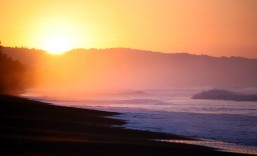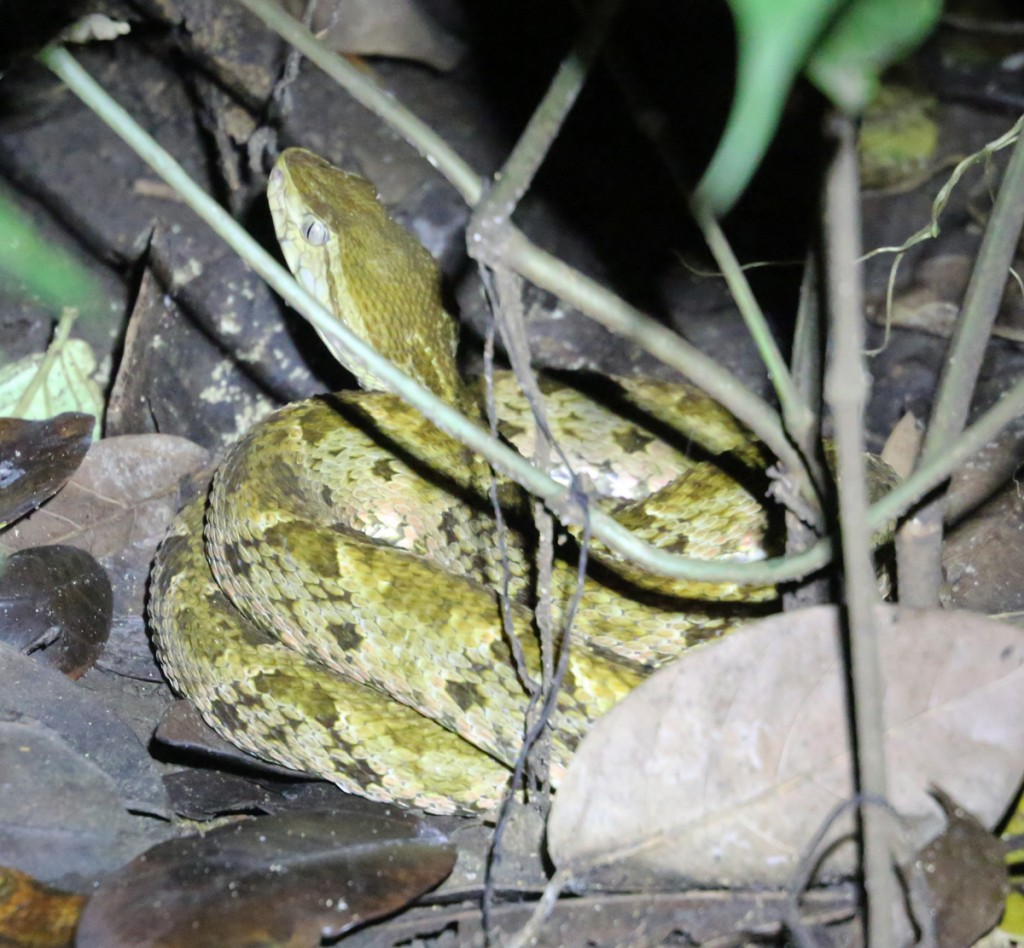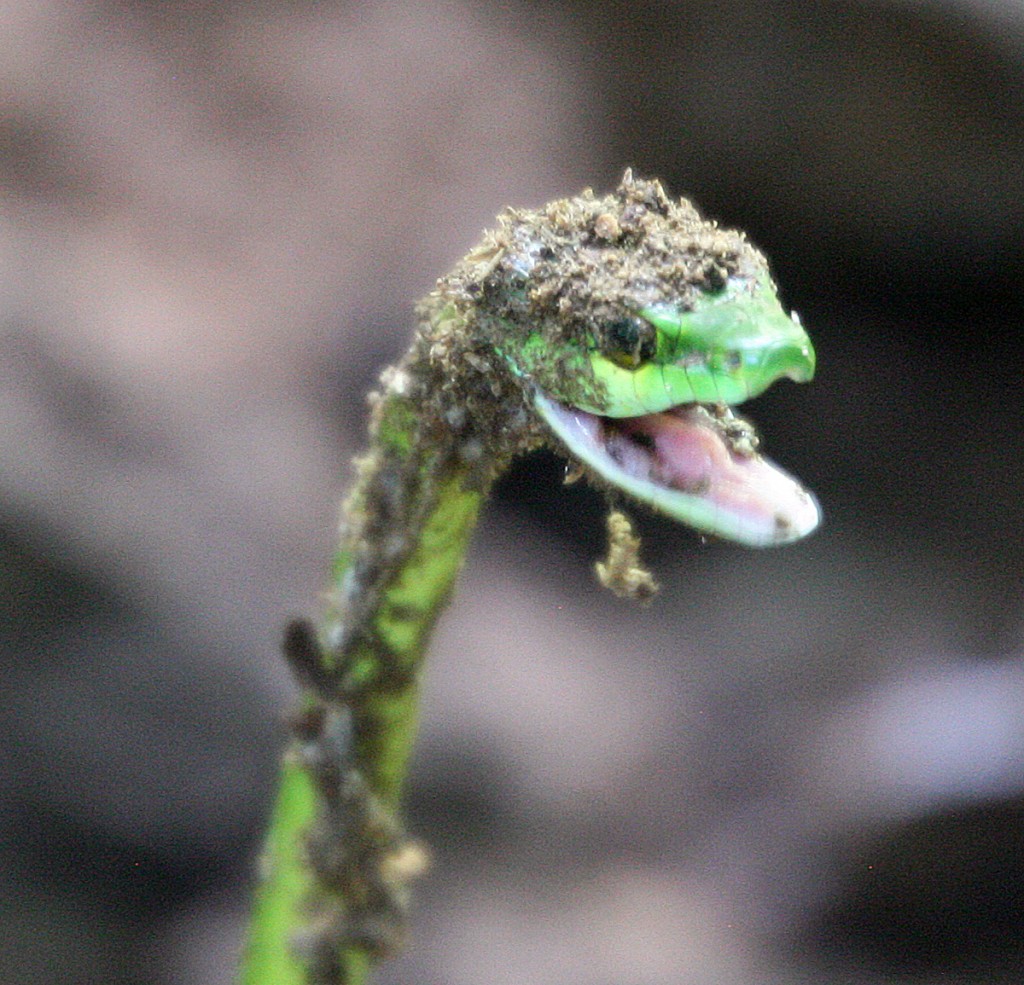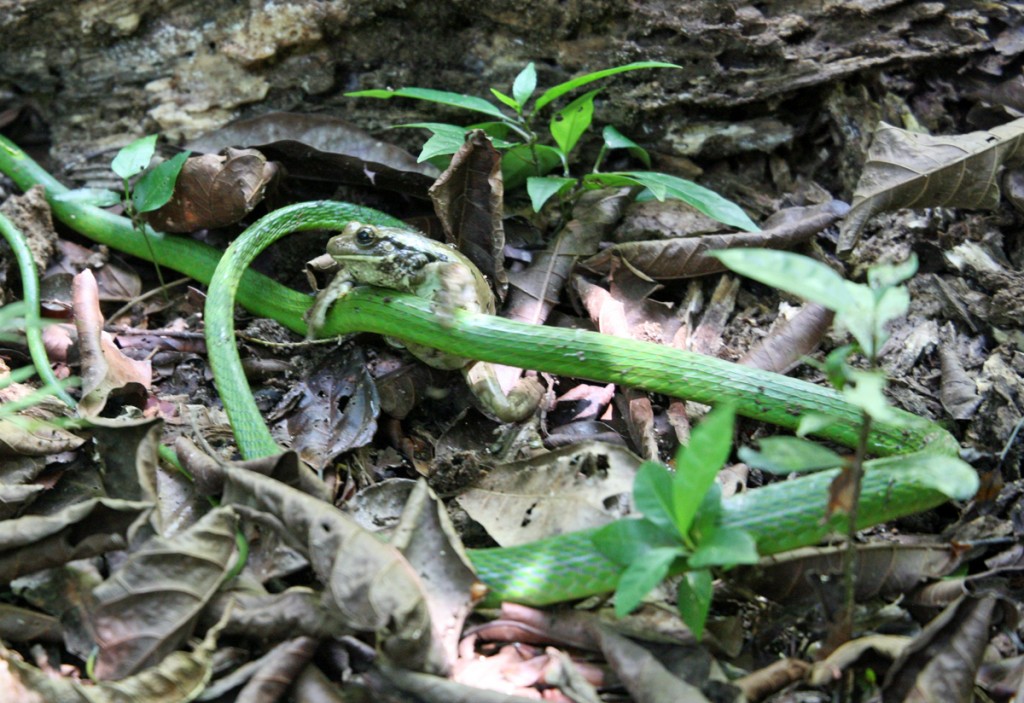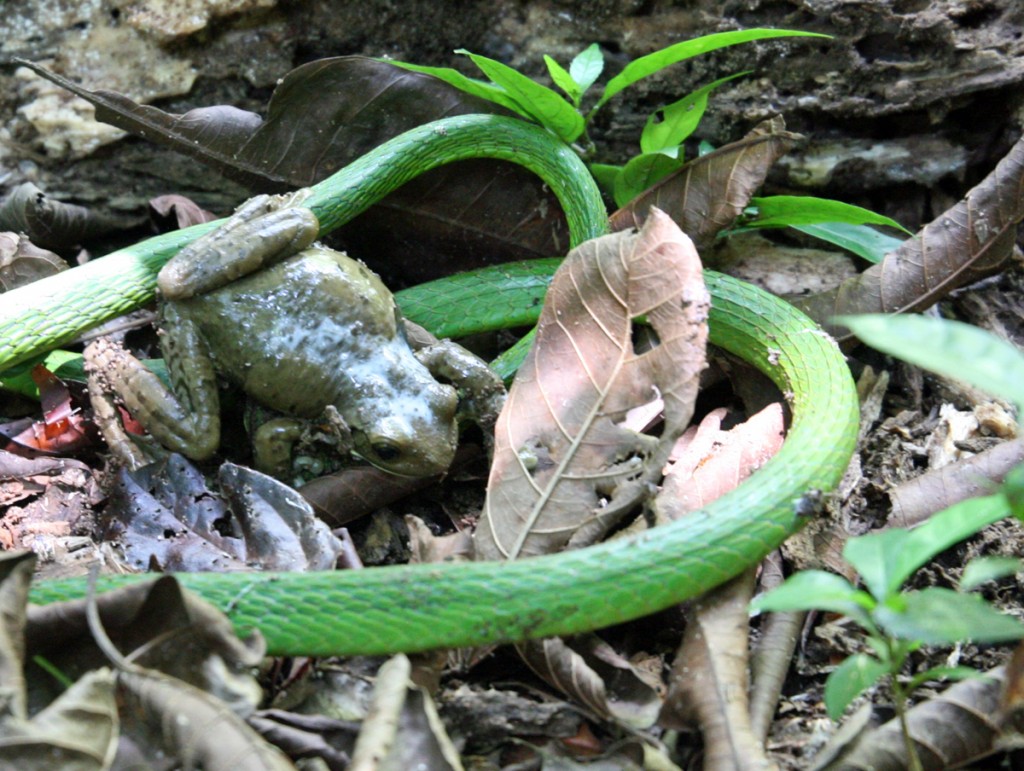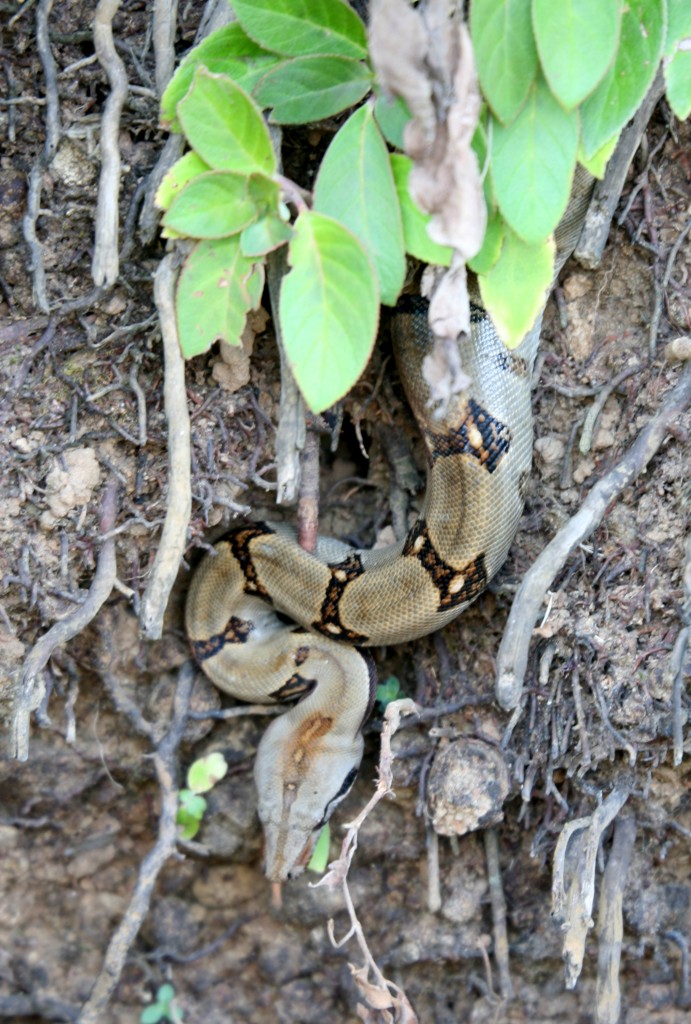The Fer-de-lance (Bothrops asper) is Costa Rica’s most notorious poisonous snake. I have only seen this pit viper species once, and it was during my most recent visit to Costa Rica. The good people at La Tarde knew where this one had staked out a place on the rainforest floor. We took a night hike to find it, and used our flashlights to illuminate it for this photograph.
All media is copyright costaricawildlife.net, 2013.
